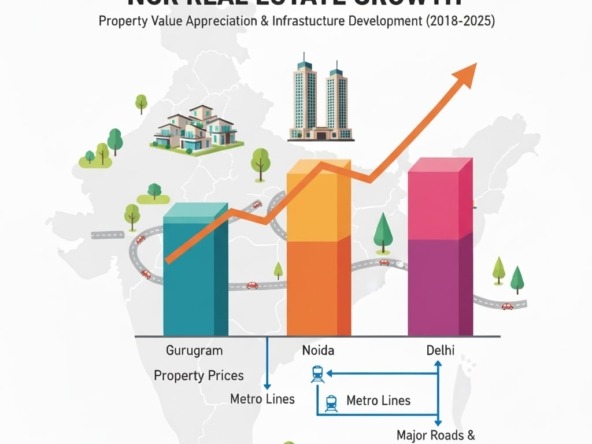Gurugram Meet Calls for Transparent and Citizen-Led Urban Governance
Gurugram, the shining face of modern India’s urban dream, is once again in the spotlight. This time, not for its skyscrapers or commercial boom, but for its growing need for transparent, citizen-driven governance. At the Mission 7374 Conference held in John Hall, Civil Lines, experts and citizens came together to discuss how Gurugram can shift from ad-hoc urban management to a more accountable, people-led governance model.
Mission 7374: A Step Toward Reform
The Mission 7374 Foundation hosted one of the largest dialogues on urban reform in Haryana. The event brought together former IAS officers, municipal councillors, urban planners, and RWA representatives from key areas like DLF, New Gurugram, Palam Vihar, Dwarka Expressway, and the Old City.
With 13 interactive sessions throughout the day, participants explored critical areas such as fiscal decentralisation, ward-level empowerment, infrastructure coordination, and political funding reforms.
Each discussion carried one central message Gurugram’s growth story will remain incomplete without citizen participation and local accountability.
Implementing the Spirit of the 74th Amendment
Urban governance expert Prof. Mukesh Mathur reminded everyone that India already has the tools needed for decentralised administration. He said the Model Municipal Act, created under the Indo-US FIRE programme, perfectly captures the intent of the 74th Constitutional Amendment.
According to him, the real challenge lies not in legislation but in implementation. “If states adopt and execute the Model Municipal Act sincerely, we can see real transformation with transparency, financial autonomy, and active citizen participation at every level,” he added.
This statement set the tone for the day India doesn’t lack policies; it lacks the will to enforce them effectively.
The Parastatal Puzzle of Gurugram
Speakers such as Raghvendra Rao, Prashanta Mahapatra, and S.K. Singh (IAS Retd.) emphasized a recurring problem overlapping authorities. Gurugram’s governance suffers from a “parastatal puzzle,” with multiple agencies like GMDA, HSVP, and HSIIDC working in silos.
These overlapping jurisdictions often delay civic projects and confuse accountability. The experts urged for streamlined coordination among these bodies to ensure quicker execution and clearer responsibility.
They also spoke about the importance of transferring the “three Fs” Finance, Functions, and Functionaries directly to local governments. Without this empowerment, even the most well-intentioned reforms can lose their effectiveness.
Rethinking Urban Finance for a Modern City
Financial reform formed another major pillar of the conference. Alok Shiromany, a municipal finance expert, pointed out that Gurugram’s civic administration handles thousands of crores in assets and expenditures but still follows outdated cash-based accounting systems.
He suggested that the Municipal Corporation of Gurugram (MCG) should adopt accrual-based accounting, where every asset, liability, and service cost is recorded transparently. “Performance-driven governance begins with financial transparency,” he said.
This approach would help track resource usage better and encourage responsible spending, allowing residents to see where every rupee goes.
Political Funding and the Reform Mindset
Transparency in governance cannot be achieved without transparency in political funding. Gaurav Malik, President of the Mission 7374 Foundation, spoke passionately about the need for clean funding models.
“Gurugram’s future depends on reform capital, not rent capital,” he remarked. He highlighted how real estate and liquor interests have long dominated political donations in Haryana. Malik encouraged professionals, entrepreneurs, and residents to support reform-oriented politics through transparent contributions.
His vision was clear citizens must not just demand change but also fund it responsibly.
Citizens Taking the Lead
Adding to the momentum, Sunny Singh Daultabad, spokesperson for the Mission 7374 Foundation, announced that 150 citizen meetings will be held across Gurugram in the coming months. These gatherings aim to build public consensus on urban reforms and empower residents to play an active role in governance.
R.C. Bidhan, Divisional Commissioner of Gurugram, praised the event as “a rare example of collective civic introspection.” The Foundation also revealed plans to publish a Gurugram Governance Declaration, which will be submitted to the Chief Minister, Chief Secretary, and Urban Local Bodies Department.
The move marks the beginning of a new era where citizens and policymakers work together to shape Gurugram’s governance model.
Building a Model City Together
Every expert at the conference agreed on one thing Gurugram has all the potential to become a model city for India’s urban future. However, this transformation can only happen if transparency, decentralisation, and accountability become part of everyday governance.
By empowering local wards, adopting modern accounting systems, and involving citizens directly in policymaking, Gurugram can redefine how Indian cities are managed.
Sanjeev Singh, MD, SKJ Landbase, on Citizen-Driven Growth

Sharing his perspective, Sanjeev Singh, MD, SKJ Landbase, said:
“Gurugram’s strength has always been its people. When citizens take ownership of their city’s future, transparency follows naturally. A balanced collaboration between civic authorities, residents, and responsible developers will create a city that not only grows economically but also sustains socially. Mission 7374 is an important step in that direction.”
Conclusion
The Mission 7374 conference did more than discuss policies it ignited a civic awakening. Gurugram now stands at a crossroads where it must choose between top-down management and citizen-led transformation.
If the momentum from this event continues, Gurugram could soon set a national benchmark for participatory urban governance where growth is not just measured by infrastructure, but by how empowered its citizens feel.




